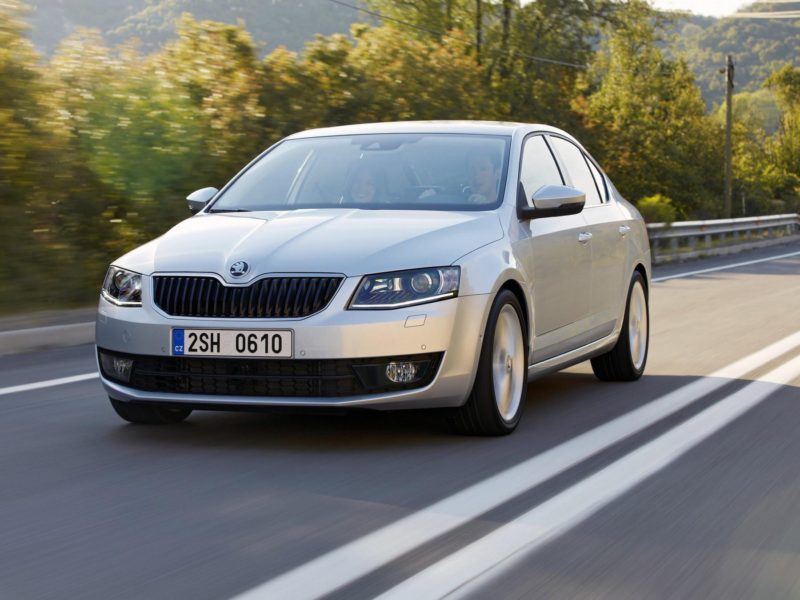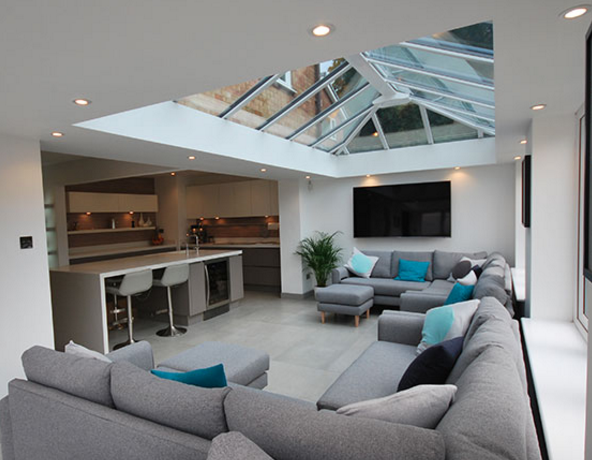Happy New Year and welcome to 2017. The beginning of the year is always about contemplation and renewal and we believe you should consider a new car for the family. Now is the best time to think about it as you have summer holidays to plan for and you may need a fresh pair of wheels for that. Also as your children go through school, they may pick up more friends meaning you have to pick up more passengers during the school run. So much to consider when it comes to your family car.
Depending upon what you want from your family car, we have a few great suggestions for you. There are a variety of ways to get these cars and one of the easiest is through car leasing with no upfront deposit. All you need to do is pay monthly for an agreed period, usually 3-4 years.
Skoda Octavia
Skoda have long been rated as excellent cars and the Octavia is one of their best. It is brilliantly built, both inside and out and is very safe, making it great for your family. In fact, Skoda updated the Octavia last year, giving it a new high tech petrol engine and extra equipment.

Octavia’s Engine
There is a wide selection of engine options available for the Octavia, so we will cover the cheapest, the fastest and the greenest engines just to give you a flavour of what you could get for your family.
The cheapest model of the Octavia comes with a 1.0-litre TSI S petrol engine. It develops 115 bhp. With that power, it accelerates from 0-60 mph in 9.9 seconds, making it great for getting up to speed on the motorway. It has a top speed of 126 mph. With regards to the fuel economy, you get a very respectable combined fuel economy of 62.8 mpg. You will not be losing shed loads of money running this car.
The greenest Octavia is the 1.6 TDI 110 SE Technology Greenline III (mouthful). It has a four-cylinder diesel engine producing 110 bhp. It has a top speed of 128 mhp and accelerates from 0-60 mph in 10.6 seconds. More importantly however, it has a combined fuel economy of 80.7 mpg. You won’t be filling this car up too often and it’ll save you plenty of money.
The same cannot be said for the fastest Octavia. This model is the Octavia 2.0 TSI vRS. Under the bonnet you will find a four-cylinder 2.0-litre turbocharged petrol engine developing 220 bhp. From this power, this Octavia has a top speed of 154 mph and accelerates from 0-60 mph in 6.8 seconds, making it one quick car off the mark. It does come with a combined fuel economy of 45.6 mpg, which isn’t too bad considering the power you get with this model. Truthfully if you have chosen this car then fuel economy isn’t high on your priorities.
Octavia’s Interior
Climb inside the Octavia and you will find a brilliantly well-built car. The dashboard is simply set out and easy to use so no need to mess around with the dials whilst driving. The materials are all up to the quality of its German rivals (so excellent). The infotainment system is easy to use as well. It comes with large icons and can be used on the move without having to take your eyes off the road for long periods of time.
Now when it comes to space for the family and friends, the Octavia has plenty of space for 5 six-foot adults to sit comfortable with plenty of legroom and headroom. That means when on the school run, your children and their friends will be very happy. Head around to the back of the car and open the boot, you will find an impressive amount of space. You get a whopping 590-litres of boot capacity and if you don’t need to take all the children and need some additional space, you can drop those rear seats and increase the boot capacity to 1,580-litres.
The Skoda Octavia is the best family car on the market without a doubt, but that doesn’t mean it will suit your taste. Therefore, check out our next suggestions!
Audi A3 Sportsback
Audi are great at making brilliant cars and for the practical family car, they have one of the best. Their premium family hatchback is the Audi A3 Sportsback. It comes with five doors for better access, so no more squeezing yourself or your kids in and out of the back.

Audi A3 Sportsback’s Engine
The one model to consider is the 1.6 TDI Sport model. It comes with a four-cylinder turbocharged diesel engine producing 110 bhp. It has a top speed of 124 mph, which you will never need to reach, but it’s good to know. You will be able to accelerate from 0-60 mph in 10.7 seconds, which it can both smoothly and quickly so it is great for motorway driving. It is also a money saver, having a combined fuel economy of 70.6 mpg.
There is a faster model in the form of the Audi A3 Sportsback 2.0 TDI 184 Quattro S Line (another mouthful). It has a four-cylinder turbocharged 2.0-litre diesel engine with automatic gearbox. It develops 184 bhp allowing it to accelerate from 0-60 mph in 6.9 seconds making it quick off the mark and great for the motorway. It also hits a top speed of 143 mph. Despite it being such a quick car, it has an impressive fuel economy of 57.7 mpg. It is quick, powerful and still has low running costs.
Audi A3 Sportsback Interior
With Audi building the A3 Sportsback, you can be assured that the build quality will be high. The plastics are soft-touch so you have no rough surfaces. You also have leather and piano black or aluminium trim to break up the design and gives you a very upmarket feel. You get a fully up to date infotainment system that is controlled by a physical knob ensuring that you can keep your eyes on the road without having the mess around with touchscreen.
Lets talk passenger space. Audi have ensured that six-foot adults can sit comfortably both in the front and in the back without concern. If you have four adults you should be very comfortable, but add a fifth and whilst it is still comfy, it is a little tight. You don’t have to worry about this with your children. They should have plenty of space. Boot capacity is 380-litres so it isn’t as big as the Octavia, but it is still plenty of place for practical use for day to day use.

Vauxhall Astra
The Vauxhall Astra is one of the best staple family hatchbacks available on the road today. It has in fact been around for over 36 years and in its lifetime, has sold over three million cars. I continue to be an affordable family car that would be perfect for the school run and commute to work.

Astra’s engine
Like the majority of family cars, there are a variety of engines to choose from. Our first model is the 1.4i 16V Design. Under the bonnet you get a four-cylinder 1.4-litre petrol engine that develops 100 bhp. With that, this Astra hits a top speed of 115 mph and accelerates from 0-60 mph in 12.6 seconds. It also comes with a combined fuel economy of 52.3 mpg.
The greener model is the 1.6 CDTi 16V ecoFLEX Design (what is it with these mouthfuls?). This one has a four-cylinder turbocharged 1.6-litre diesel engine. It produces 110 bhp and has a top speed of 124 mph. It accelerates from 0-60 mph in 10.2 seconds. More importantly it has a combined fuel economy of 85.6 mpg ensuring you save money on running costs.
Now let us talk speed. The fastest Astra model is the 1.6T 16V 200 Elite. It also has a four-cylinder turbocharged 1.6-litre petrol engine. It develops 200 bhp, allowing it to have a top speed of 146 mph and sprints from 0-60 mph in 6.6 seconds. Despite the speed and the power, this Astra has a decent fuel economy with 46.3 mpg.
Astra’s interior
For the price, you pay for the Astra, you get a well-built interior and easy to use infotainment system. The dashboard comes with either seven-inches or eight-inches and has a newer, simpler layout compared to older models. The materials in the cabin are good quality and well put together ensuring you enjoy being sat there. Quick note: the speedometer rises in 20 mph so there isn’t actually a 30 mph mark.
Passenger space is great for families in this car too. You get plenty of space for both adults and children, although add a fifth adult in and it does get slightly tight. The Astra’s boot has 370-litres of boot capacity and when you drop those rear seats, that increases to 1,210-litres or 1,235-litres depending upon your model of choice.
There are many brilliant family cars and these are our top suggestions for you. Now should be a time of considering how 2017 can be will be the best year for your family. One way of making that become a reality is why decided if you have the right car for your family.
Getting that perfect family car can make such a difference and make everything so much easier. Driving away with a car like a Skoda Octavia or an Audi A3 has been made even easier thanks to car leasing. You don’t have to worry about placing a deposit. All you need to know if your monthly budget and how long you want to agreement to last and you can drive away with a leased car in no time.







